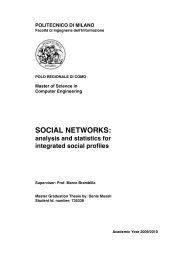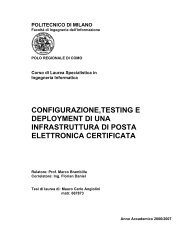Una metodologia di analisi e confronto per strumenti BPM
Una metodologia di analisi e confronto per strumenti BPM
Una metodologia di analisi e confronto per strumenti BPM
You also want an ePaper? Increase the reach of your titles
YUMPU automatically turns print PDFs into web optimized ePapers that Google loves.
3.1. Standard grafici <strong>per</strong> la modellazione 61<br />
default. Il suo simbolo è caratterizzato dall’avere uno slash <strong>di</strong>agonale<br />
all’inizio della linea (figura 3.27).<br />
• Flusso <strong>di</strong> eccezione: viene utilizzato <strong>per</strong> definire le deviazioni del flusso<br />
<strong>di</strong> processo rispetto al flusso normale. Queste eccezioni dal normale<br />
flusso <strong>di</strong> processo vengono attivate me<strong>di</strong>ante l’utilizzo <strong>di</strong> un evento<br />
interme<strong>di</strong>o (figura 3.28).<br />
• Flusso con<strong>di</strong>zionale: è un flusso <strong>di</strong> sequenza avente un espressione<br />
con<strong>di</strong>zionale che viene valutata a runtime <strong>per</strong> determinare quale flusso<br />
dovrà seguire il processo (figura 3.29).<br />
Figura 3.27: Flusso <strong>di</strong> default <strong>BPM</strong>N<br />
Figura 3.28: Flusso <strong>di</strong> eccezione <strong>BPM</strong>N<br />
Figura 3.29: Flusso con<strong>di</strong>zionale <strong>BPM</strong>N<br />
Transazioni La notazione <strong>per</strong>mette <strong>di</strong> definire parti del processo come<br />
transazioni. Nella notazione <strong>BPM</strong>N una transazione è un sotto-processo che<br />
contiene un flusso <strong>di</strong> processo che è sottoposto ai meccanismi <strong>di</strong> gestione delle


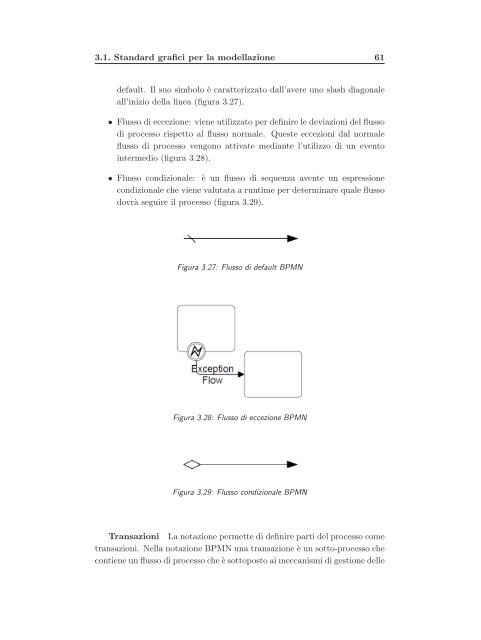
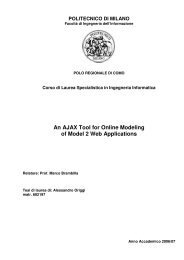
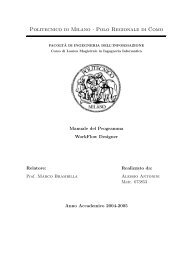
![Full text preview of the chapter [PDF] - Politecnico di Milano](https://img.yumpu.com/44021924/1/180x260/full-text-preview-of-the-chapter-pdf-politecnico-di-milano.jpg?quality=85)
